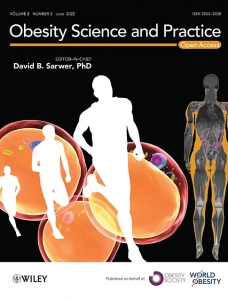Relationship between anthropometric indices and arterial stiffness: Insights from an epidemiologic study
Obesity Science & Practice,First published: 14 December 2021
Abstract
Background
Obesity and arteriosclerosis are both independently associated with cardiovascular disease risk. Obesity also may increase arterial stiffness.
Aims
This study aimed to investigate the association between anthropometric indices and non-invasive arterial stiffness parameters, using data from a large population-based cohort of seemingly healthy women and men.
Methods
A total of 5023 eligible participants were included in the study. The pulse wave velocity (PWV), central blood pressures, and bio-impedance measures were obtained at the time of enrollment. Multiple regression analysis was performed to assess the relationship between anthropometric indices with arterial stiffness parameters.
Results
The mean age of participants was 45.3 ± 8.8 years, 2368 (47.1%) were males and 2655 (52.8%) were females. The prevalence of participant with underweight, normal weight, overweight, and obesity were 0.73%, 33.2%, 48.7%, and 17.2% respectively. Systolic and diastolic blood pressure, fatty liver, and hypertension were significantly higher in overweight/obesity participants. The overweight/obesity participants had significantly higher PWV than the normal-weight group (471.5 ± 42.6/496.7 ± 47.5 cm/s vs. 448.1 ± 41.4 cm/s, p < 0.001).
Conclusion
The prevalence of diabetes, hypertension, fatty liver disease, chronic lung disease, and also kidney stones were significantly higher in overweight and individuals with obesity. Body mass index, body fat mass, waist–hip ratio abdominal circumference, neck circumference, visceral fat area, total body water, 50-kHz whole body phase angle are positively correlated with PWV. Augmentation index had no significant correlation with body mass index, arm, hip, and abdominal circumferences.

